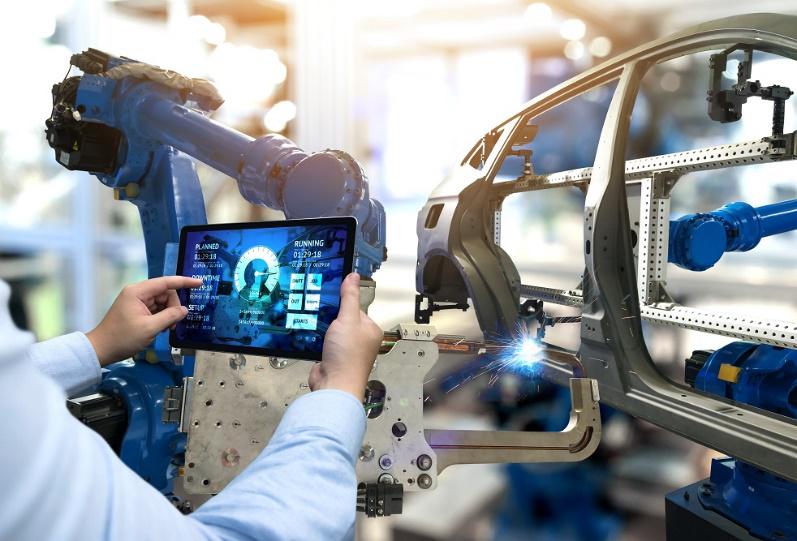January 22 2024
By: Shawn M. Galloway
As someone with the chosen mission of continuously challenging the thinking of what is and isn't excellence in safety, I'm always looking for ways to foster continuous improvement within creative thinking. The human brain, which has always fascinated me, offers new solutions. As technology advances and our understanding of the human brain deepens, the intersection of neuroscience and occupational safety presents unprecedented opportunities.
The latest advancements in neuroscience offer insights into human behavior, cognitive functions, and stress responses, paving the way for innovative strategies to enhance safety in the workplace. Here are some new approaches organizations can use to usher in a new era of what's possible within occupational safety.

Understanding Human Behavior and Decision-Making: Neuroscience research provides valuable insights into human behavior and decision-making processes. By understanding how individuals perceive risks, make decisions under pressure, and respond to safety protocols, organizations can tailor safety training programs and interventions to align with the intricacies of the human brain.
Real-time Monitoring of Cognitive Load: Cutting-edge technologies enable real-time monitoring of cognitive load, which refers to the mental effort required to perform a task. Organizations can assess employees' cognitive load during safety-critical activities by utilizing neurotechnology devices. This insight allows for adjustments in task design, workload management, and the implementation of fatigue prevention measures.
Neurofeedback for Stress Management: Neurofeedback, a technique that provides individuals with information about their brain activity, can be employed to manage stress in the workplace. By monitoring stress-related brainwave patterns, organizations can implement targeted interventions, such as mindfulness programs or relaxation techniques, to reduce stress levels and enhance overall well-being.
Biometric Wearables for Fatigue Management: Biometric wearables equipped with neurotechnology can monitor physiological indicators of fatigue, such as heart rate variability and brainwave patterns. These wearables provide real-time data on employees' fatigue levels, enabling organizations to implement timely interventions, such as rest breaks or task redistribution, to mitigate the risk of fatigue-related incidents.
Customized Stress Resilience Programs: Personalized stress resilience programs can be developed based on individual neurobiological profiles. Organizations can utilize neuroscience insights to address specific stressors for each employee, promoting a culture of resilience and enhancing overall mental well-being.
Neuroscience-Informed Ergonomic Design: Neuroscience research contributes to the design of workspaces that align with the brain's cognitive and sensory functions. This includes optimizing lighting, acoustics, and ergonomic considerations to reduce cognitive fatigue and enhance overall comfort, thereby contributing to improved focus and safety.
Neuroscience-Driven Safety Leadership Training: Leadership plays a crucial role in shaping safety culture. Neuroscience-informed leadership training can enhance leaders' understanding of human behavior, decision-making processes, and the impact of their actions on team dynamics. This, in turn, fosters a safety-conscious leadership approach that permeates throughout the organization.
The marriage of neuroscience and occupational safety holds transformative potential for organizations seeking to create safer and healthier workplaces. By leveraging the latest advancements, from real-time monitoring of cognitive load to personalized stress resilience programs, organizations can tailor safety initiatives to the intricacies of the human brain. As neuroscience continues to unveil the mysteries of our cognitive processes, its integration into occupational safety practices promises a future where safety is not just a set of protocols but a holistic understanding of human well-being in the workplace.
"The brain is the organ of destiny. It holds within its humming mechanism secrets that will determine the future of the human race." — Wilder Penfield
"If you wanted to create an education environment that was directly opposed to what the brain was good at doing, you probably would design something like a classroom. If you wanted to create a business environment that was directly opposed to what the brain was good at doing, you probably would design something like a cubicle. And if you wanted to change things, you might have to tear down both and start over." — John Medina
"Neuroscience is a baby science, a mere century old, and our scientific understanding of the brain is nowhere near where we'd like it to be. We know more about the moons of Jupiter than what is inside of our skulls." — Matt Haig

Shawn M. Galloway is the CEO of ProAct Safety and an advisor to leading organizations across all major industries. With over twenty years of experience in safety systems, strategy, culture, leadership, and employee engagement, he is a trusted advisor, keynote speaker, and expert witness.
He is the author of several bestselling books and has multiple regular columns in leading magazines, with over 400 articles and 100 videos to his credit. He also created the first safety podcast, Safety Culture Excellence, with over 800 episodes. Shawn has received numerous prestigious accolades and has been featured in Power 101 Leaders of the EHS World, Top 50 People Who Most Influenced EHS, Top 40 Rising Stars, Top 11 Health and Safety Influencers, and Top 10 Speakers.
He serves on the Harvard Business Review Advisory Council and the Fast Company Executive Board. He has appeared as a guest on Bloomberg, Fox News, The Daily Mail, Dubai One, U.S. News & World Report, Sirius Business Radio, Wharton Business Daily, and leading safety magazines and podcasts, reinforcing his status as an authority in the field of safety excellence.
For more information, call +1.936.273.8700 or email info@ProActSafety.com.
